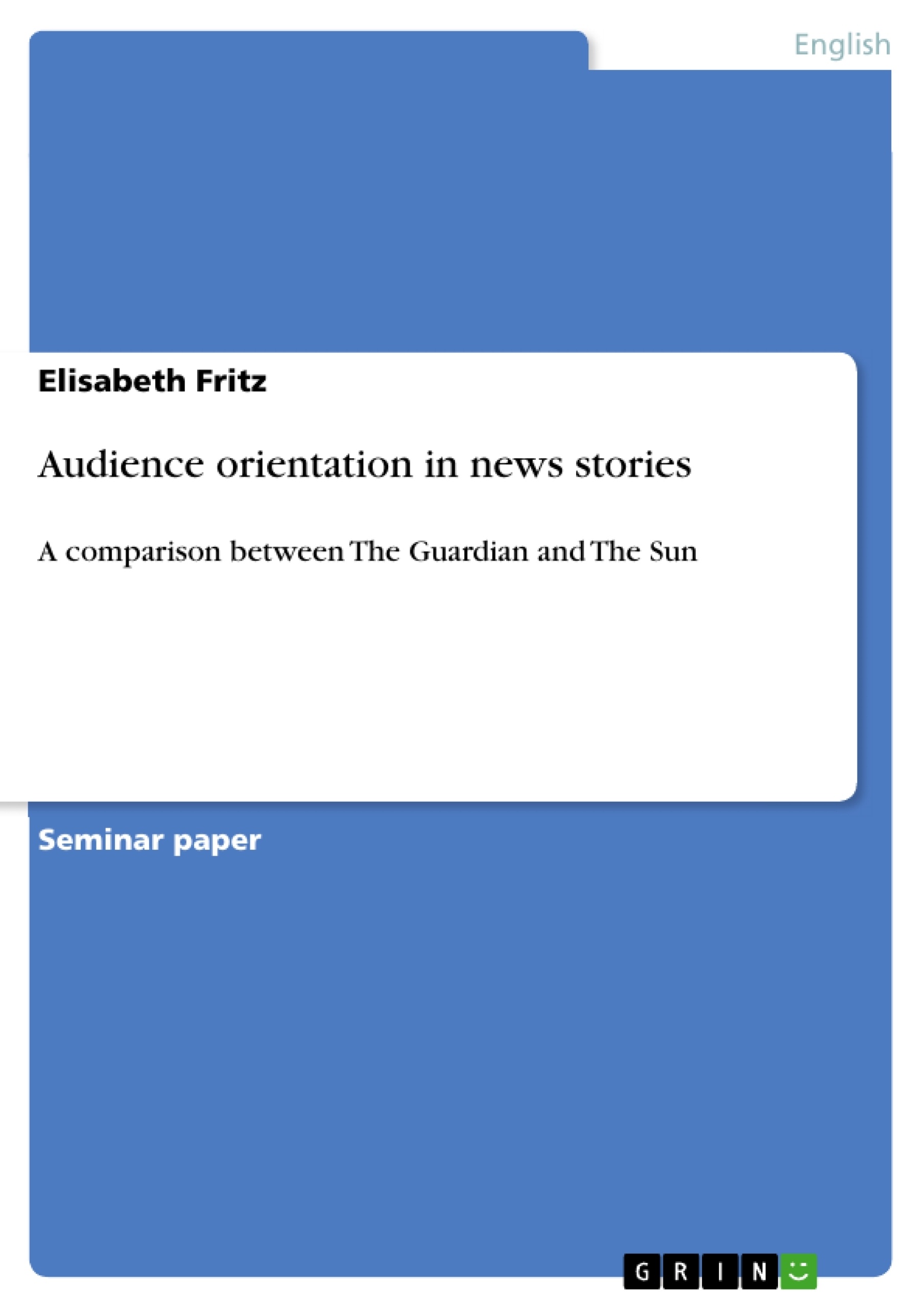Every day new things happen. With modern technology, news can be distributed all over the world and faster than ever before. Additionally, the distribution of (and access to) news has become much cheaper. Consequently, the number of sources we can get information from has increased drastically throughout the last decades, as has the amount of information. In our modern information society, the mass media have come to play a decisive role. At the same time, it becomes more and more difficult to judge the reliability of the news. One of the oldest forms of mass media, which is still generally regarded as trustworthy, is the newspaper.
When it comes to newspapers, people usually prefer one (or two) specific news¬papers to others. Every newspaper has its own specific image which includes some characteristics that it is generally known for. If all newspapers provided all the news there is and reported it in an objective manner, this would not make much sense. Indeed, with the amount of potential “news” emerging every day and the restrictions of the medium, it is impossible to cover everything – the newspapers must choose what to include in their coverage and what not to. Similarly, it is an illusion to expect news to be reported completely objectively. One reason for this is that the medium language inherently conveys connotations and values, which makes a purely objective coverage simply impossible. But apart from this restriction, it is a well-known fact that newspapers all have their particular perspective from which they contemplate and present news.
However, this is not solely the newspapers’ choice. Since they are financially dependent on their readers who buy their issues, they have to do their best in order to meet their readerships’ interests. Considering that every newspaper has its own typical kind of readership, it should be possible to identify the means they use and analyse how they adapt to this specific group.
This paper will analyse one specific news story which was published in the course of a few days in two newspapers known to write for opposite types of readers. The aim is to show how news can be reported differently and how these differences can be explained in terms of an orientation towards different kinds of audiences. Before the actual analysis, however, the communicative context of newspaper discourse will be briefly contrasted to face-to-face discourse with special reference to the role of its audience.
Table of Contents
- Introduction
- Newspaper and newspaper audience
- Analysis of audience-orientation in The Guardian and The Sun.
- The British newspapers: broadsheets vs. tabloids.
- Description of the material analysed.
- Aspects of oral discourse - solidarity vs. authority.
- Typography and orthography.
- Syntax and morphology.
- Register.
- Polarisation - camaraderie vs. seriousness.
- Representation of Priklopil and Kampusch: vocabulary.
- Representation of positive information concerning Priklopil and of Stockholm syndrome.
- Representation of the parents: specificity of negative ingroup information.
- Different foci of Sun and Guardian articles - entertainment vs. information.
- Conclusion
Objectives and Key Themes
This paper aims to analyze a news story published in two newspapers known for their contrasting readership. By comparing how these newspapers report the same story, the paper seeks to demonstrate the differences in their approach based on their target audience orientation. The analysis will delve into the communicative context of newspaper discourse, highlighting the unique aspects of this medium compared to face-to-face communication.Key themes explored in this paper include:
- Audience orientation in newspaper discourse.
- The role of stereotypes and expectations in media production.
- Linguistic features that reflect audience-oriented reporting.
- News values and their influence on selection and presentation of news.
- The contrast between broadsheet and tabloid newspaper styles.
Chapter Summaries
- Introduction: This chapter establishes the context for the study by discussing the growing importance of mass media in today’s information society. It emphasizes the role of newspapers as a trusted source of news and acknowledges the challenges of assessing news reliability. The chapter also explores the concept of newspapers having specific images and targeting specific audiences, suggesting that objective reporting is impossible due to inherent linguistic limitations and the need to cater to readership interests.
- Newspaper and newspaper audience: This chapter contrasts newspaper discourse with face-to-face communication, highlighting the temporal and spatial separation between producers and readers. It examines the limited possibilities for audience feedback in newspaper discourse and argues that both journalists and readers rely on stereotypes about each other’s expectations and communication patterns.
Keywords
This paper focuses on the analysis of audience-orientation in newspaper discourse, examining the differences in reporting styles between broadsheet and tabloid newspapers. Key concepts include audience stereotypes, news values, linguistic features, and the impact of media production on shaping public perception. The paper draws upon theories of communication, discourse analysis, and media studies to explore the complexities of news production and consumption.- Citar trabajo
- Elisabeth Fritz (Autor), 2007, Audience orientation in news stories, Múnich, GRIN Verlag, https://www.grin.com/document/136241



